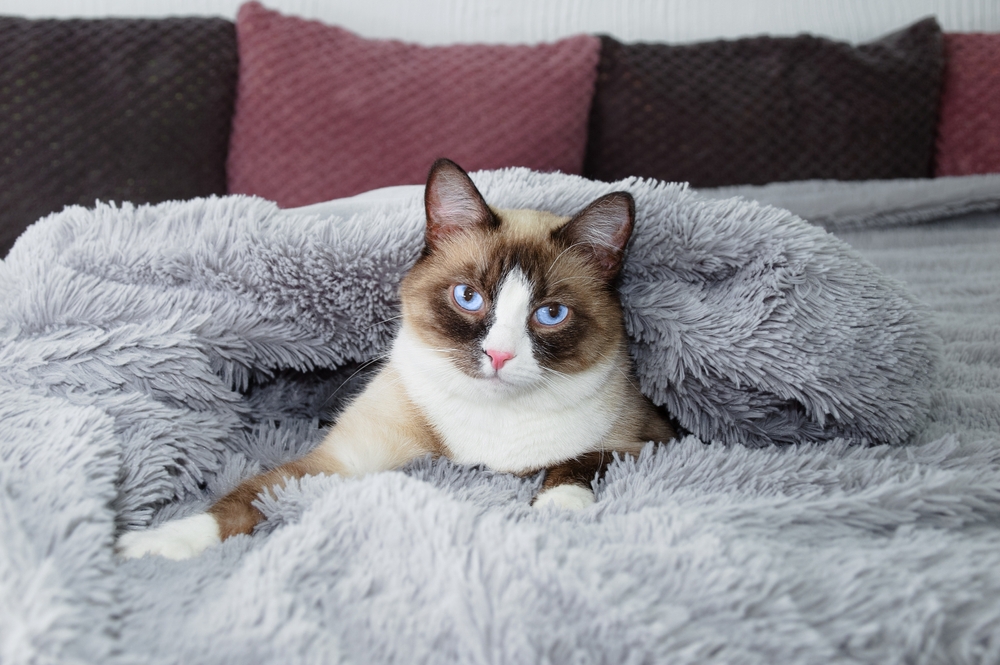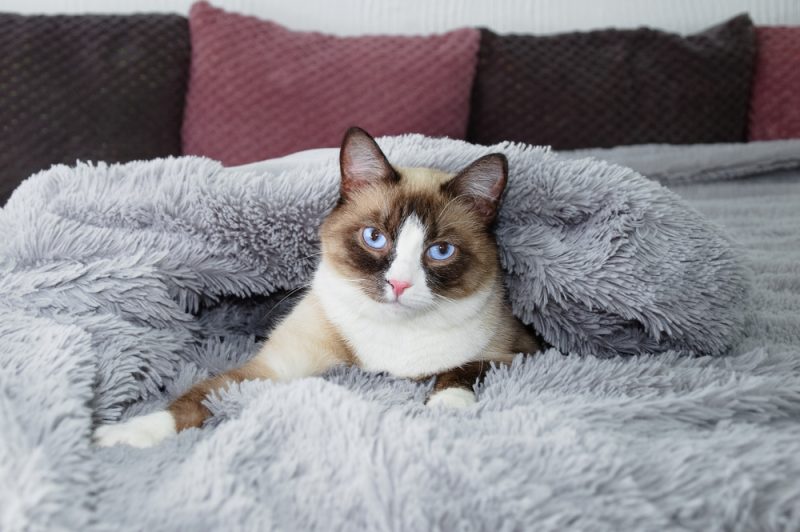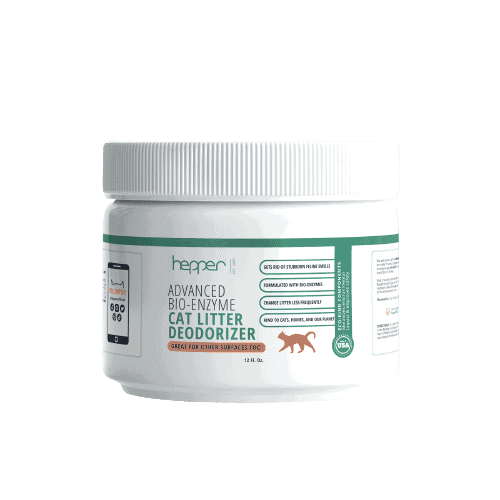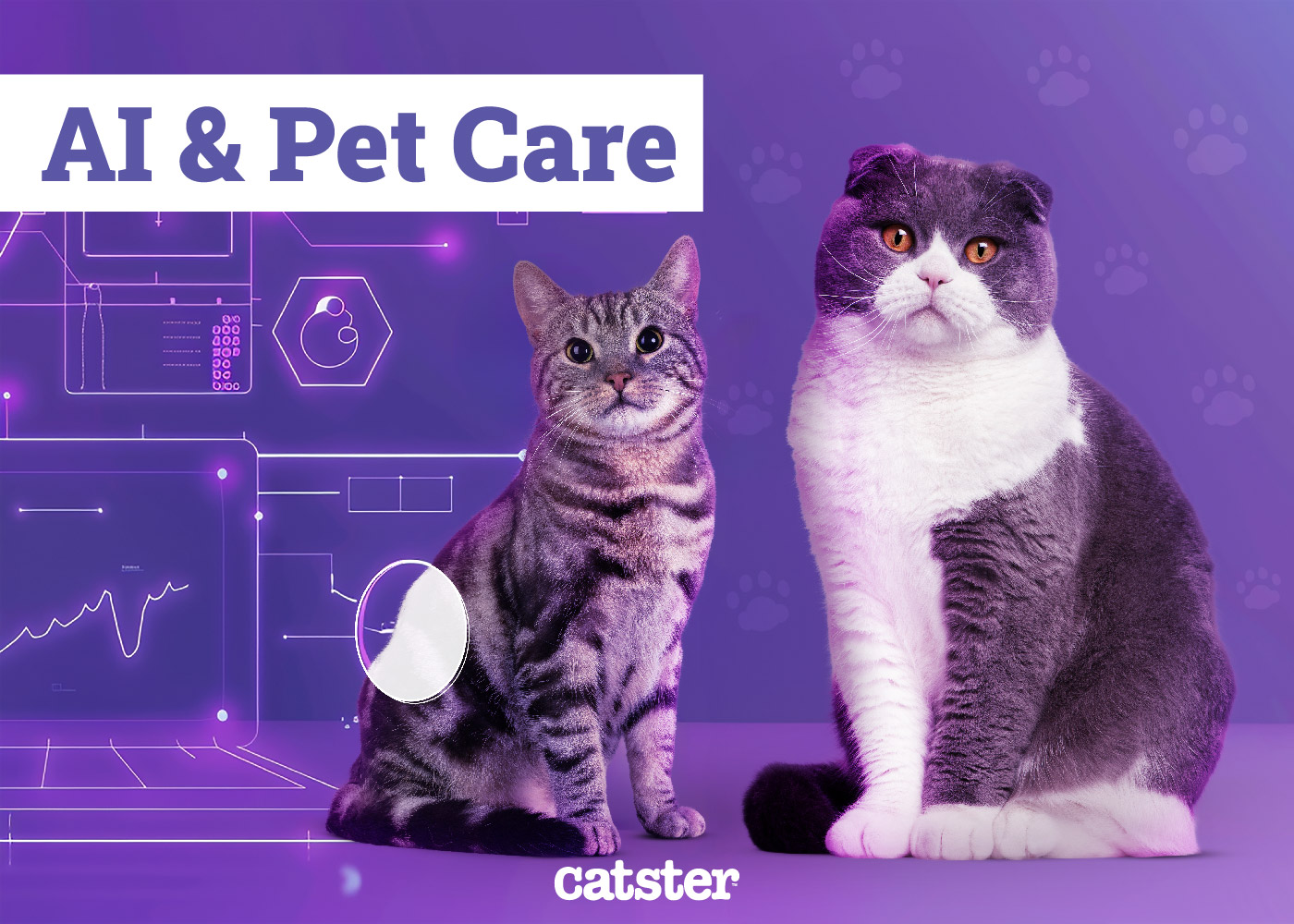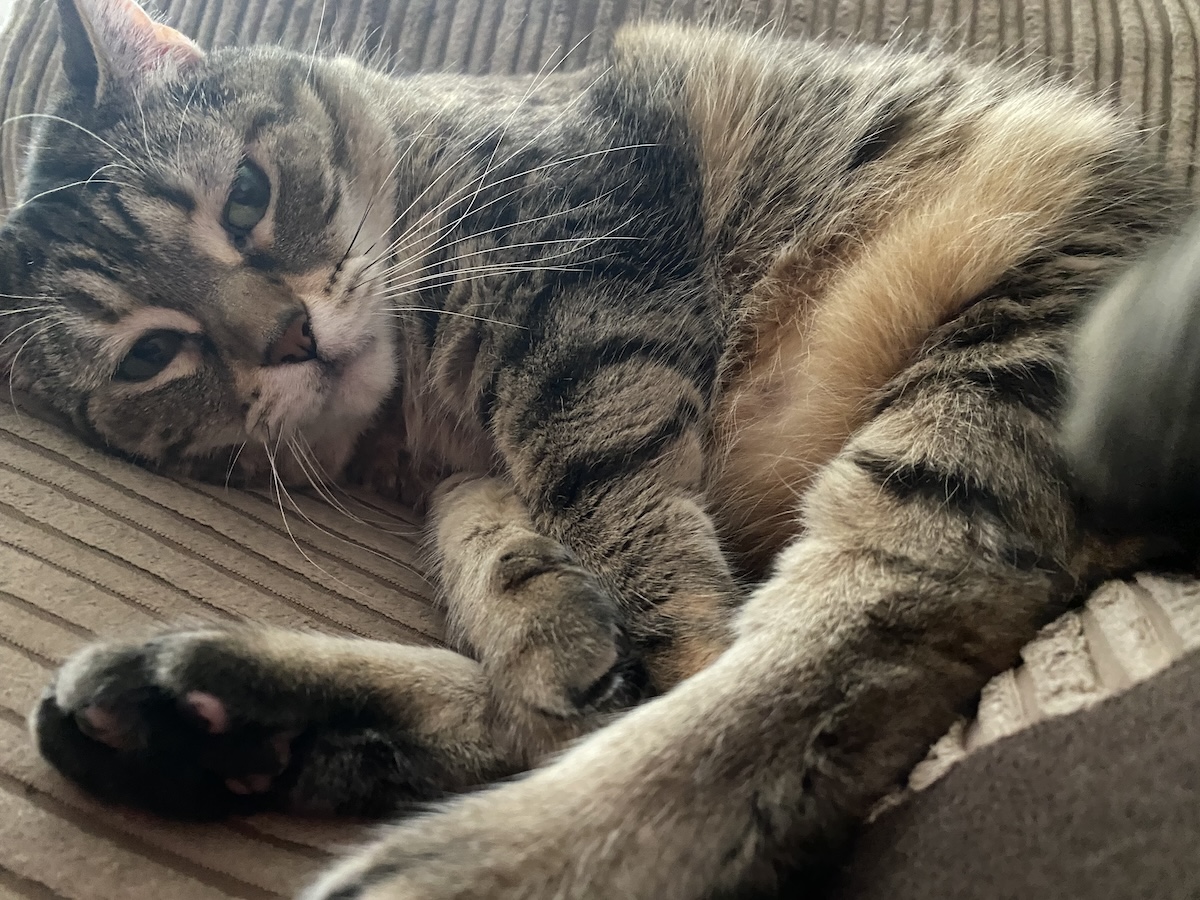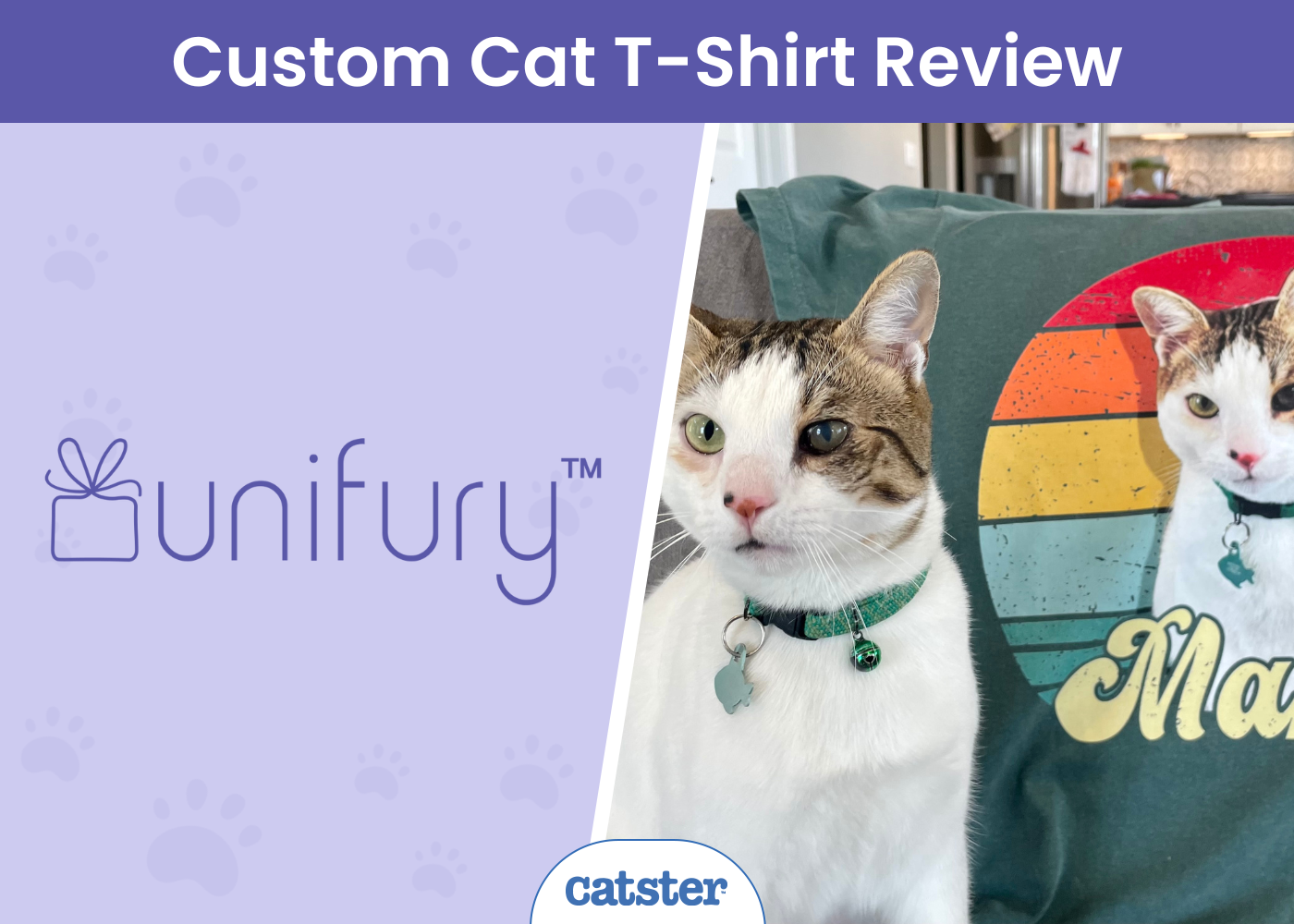Click to Skip Ahead
Snowshoe cats are a rarer breed, which also means that they are a bit more expensive than most other breeds. On average, you can expect to pay around $1,000 to $1,500 or more for a Snowshoe cat, and that doesn’t include any of the extras you need to purchase, like the food and water. You also have to consider their other needs like food, grooming, and vet care.
Below, we’ll go through everything you need to consider when budgeting for this cat breed.
Bringing Home a New Snowshoe Cat: One-Time Costs
The most expensive part of owning a Snowshoe cat will be initially purchasing the cat itself and everything they need. Cats need quite a few things that you’ll only need to buy once (or, at least, very rarely), like a litterbox and cat tree.
All of these things add up fast and can cost quite a bit. However, once you purchase them, you won’t have to worry about them again for some time.
Free
You aren’t very likely to find a Snowshoe cat for free. These cats are exceptionally rare and finding a breeder with a kitten available is hard by itself. Finding a cat at no cost is even more challenging.
Plus, you have to consider why these cats are free. Typically, breeders make their buyers sign agreements to return the cat should they no longer be able to care for it. Therefore, the odds of finding a free cat are exceptionally low, as most purebred Snowshoe cats will be under one of these contracts.
Adoption
- $50—$100
The cost of adopting a cat is usually very low. You can expect to spend anywhere from $50 to $300 for your average adoption. However, this fee often includes a lot. For instance, it may cover the initial vaccinations, spaying/neutering, and even microchipping. You won’t have to worry about getting your cat vet attention right away (like you would need to do with a free cat).
The price varies from one adoption agency to the other. Animal shelters tend to be the lowest, as they are often partially funded by the local government.
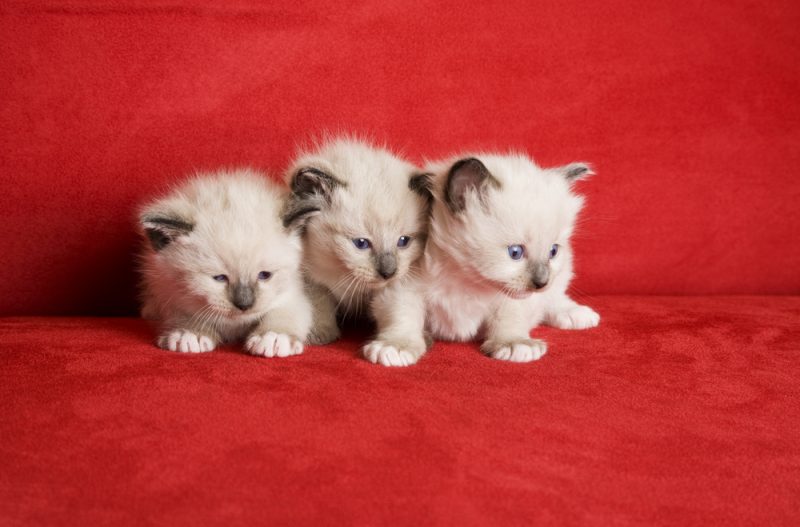
Breeder
- $1,000—$1,500
Cat breeders are the most expensive option, with Snowshoe cats costing quite a bit. However, because this breed is rare, it’s to be expected to some extent. The demand outpaces the supply, and there is a lot that goes into breeding these cats.
Pregnant cats need a lot of veterinary care, for one. Plus, breeders often pay for genetic testing and similar services before they even breed their cats, as these ensure the kittens are born as healthy as possible. The cost may be even higher than $1,500 in some cases, such as when the kitten is from a line of show cats or has rare physical features.
Initial Setup and Supplies
- $100—$400
The initial cost of the supplies needed for your Snowshoe cat is usually around $100 to $400, depending on the exact choices you make when purchasing the necessary items. Those who already have cats may not need to spend as much as they may already have many of the necessary items.
List of Snowshoe Cat Care Supplies and Costs
| Cat Litter Box | $10–$50 |
| Cat Litter | $10–$20 |
| Cat Food | $20–$50 |
| Food and Water Bowls | $5–$20 |
| Cat Bed | $10–$50 |
| Toys | $5–$20 |
| Scratching Post or Pad | $10–$50 |
| Cat Carrier | $20–$50 |
| Grooming Supplies | $10–$30 |
| Cat Tree or Condo | $30–$100 |
| Litter Scoop and Bags | $5–$10 |
| Initial Vaccinations and Vet Visits | Varies |
| Spaying/Neutering | $50–$450 |
| ID Tag or Microchip | $5–$20 |
How Much Does a Snowshoe Cat Cost Per Month?
- $50–$150 per month
As we said previously, once you purchase all the gear your Snowshoe cat needs, you can expect to spend much less each month on upkeep. Mostly, your cat will just need food and their litterbox changed. However, you should also expect to pay for routine vet exams (which usually come once a year).
Of course, there are many things that can suddenly raise the price of this, as well. For instance, your cat may need sudden veterinary care. This price can be exceptionally high, even up into the thousands of dollars.
Health Care
- $40–$120 per month
You can expect to spend a decent amount on health care each month. This category includes veterinary preventative care, as well as food and grooming. You may also want to consider pet insurance for your feline, as it can save you thousands in the event of an emergency.
Vet costs and pet insurance prices vary widely from one area to another. Often, pet insurance places lots of importance on your zip code, as this indicates how much they expect you to spend for vet care.
Food
- $20–$50 per month
High-quality cat food is essential for your cat’s health. The cost will vary widely from recipe to recipe. Some brands are much more expensive than others, for instance, but they may not actually be that much better, despite their advertising. Furthermore, it’s often recommended that cats eat wet food, which can be more expensive than dry food.
However, many pet owners still find that dry food works best for their feline, and you’ll also end up paying less if you decide to mix the two. Specialized diets will be even more expensive. However, luckily, most cats will not need these unless they develop a health condition.
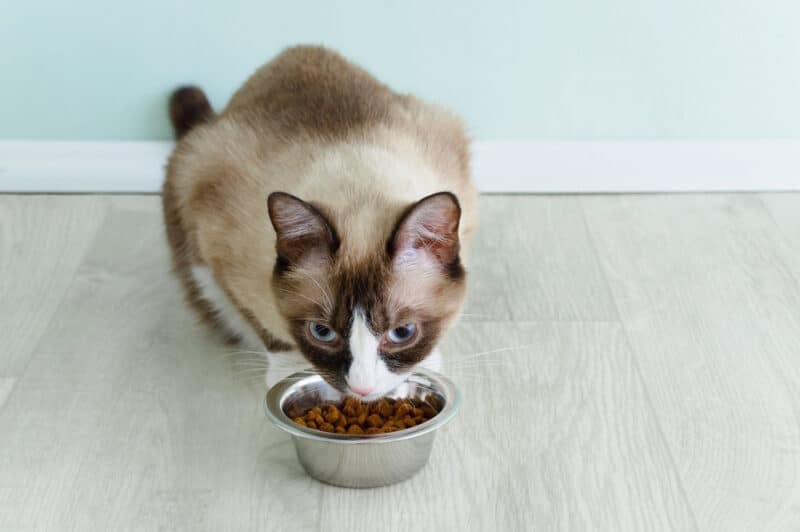
Routine Veterinary Care
- $10–$50 per month
You’ll need to get your cat regular veterinary care, including annual check-ups and vaccinations. You’ll also need to pay for regular flea and tick prevention medication, which often costs the most per month.
Annual veterinary check-ups vary widely. You’ll need to budget for annual check-ups based on your location. Pet insurance does not cover this fee or other preventative care, so be sure to plan for it coming out of your pocket, even if you invest in pet insurance.
Grooming
- $0–$10 per month
These cats have short coats and don’t require any grooming in most cases. However, you may need to budget for grooming supplies like brushes or combs. While these aren’t expensive, you may need to replace them occasionally. If you prefer a professional groomer, you can expect to pay more than this price.
If you are looking for recommendations on the best cat brush, you should check out Hepper Cat Brush. You will hardly find different brush with so many pros - easy to clean, easy to use, durable and effective. Simply everything you need from a cat brush. Click here to order yours today.
At Catster, we’ve admired Hepper for many years and decided to take a controlling ownership interest so that we could benefit from the outstanding designs of this cool cat company!
Pet Insurance
- $10–$50 per month
Pet insurance isn’t strictly required. However, it can help you pay emergency vet bills, which can cost thousands of dollars. Many people do not have the capital to make this sort of purchase out of nowhere, which is exactly where pet insurance can be helpful.
For this reason, we highly recommend getting pet insurance if you can afford it. Prices vary widely, usually due to your zip code. Areas with a high cost of living and higher veterinary costs typically cost more, as you might expect.
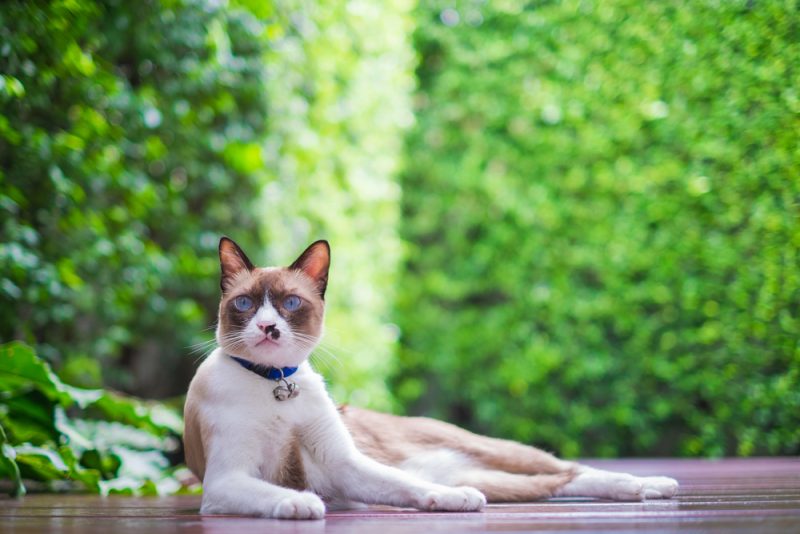
Environmental Maintenance
- $10–$20
Cats need regular litterbox changes, which will be the bulk of their environmental maintenance. The exact cost will depend on the litter you use. For instance, clumping litter may be more expensive, but it needs to be changed less (saving you more money in the long run).
Of course, most of the time, we really don’t get to pick our cat litter—our cats do. In my experience, our cats tend to be pretty picky when it comes to the cat litter they use, so we may not actually get that many options!
| Cat Litter | $10–$20/month |
| Litter Box Liners (optional) | $5/month |
Combating tough cat litter smells is an ongoing battle for pet parents but luckily, there are products out there designed to help! Two products that significantly reduce odors are the Hepper Litter Additive and the Hepper Enzyme Spray. Find out which is better suit to your needs with our breakdown of each product below. At Catster, we’ve admired Hepper for many years and decided to take a controlling ownership interest so that we could benefit from the outstanding designs of this cool cat company!
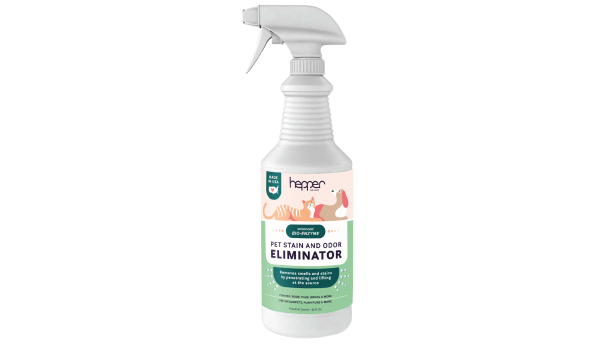
Hepper Advanced Bio-Enzyme Pet Stain & Odor Eliminator Spray
Hepper Advanced Bio-Enzyme Cat Litter Deodorizer Powder
Eliminates smells
Removes stains
Unscented
Light fresh scent
Works on multiple surfaces
Neutralizes odor within cat litter
Entertainment
- $5–$20 per month
Cats need toys to fulfill their exercise and mental stimulation needs. On top of usual cat toys, you’ll also want to invest in some interactive ones. Puzzle feeders are a great option for smarter cats, too, or for homes where your cat may be home for large portions of the day. Cats can get bored very easily, which often leads to them making their own fun (usually not what you want).
It may be easy to downplay your cat’s entertainment needs, but your flooring and couch will thank you for investing in some quality toys!
Finding a toy that your cat enjoys, is genuinely drawn to, and is excited to play with can be a challenge. That's why having a few options is always a good idea until you get an idea of what gets them moving. We love the Hepper Catnip Stick and Whale Kicker for different reasons. For cats who need a little encouragement in playing, the stick is packed full of organic catnip enticing enough to lure in the laziest of felines. The Whale is a great option for cats who love to hunt, pounce, and kick! Both are extremely durable, and can be cleaned and reintroduced for play days yet to come. Find out which is best suited to you below. At Catster, we’ve admired Hepper for many years and decided to take a controlling ownership interest so that we could benefit from the outstanding designs of this cool cat company!
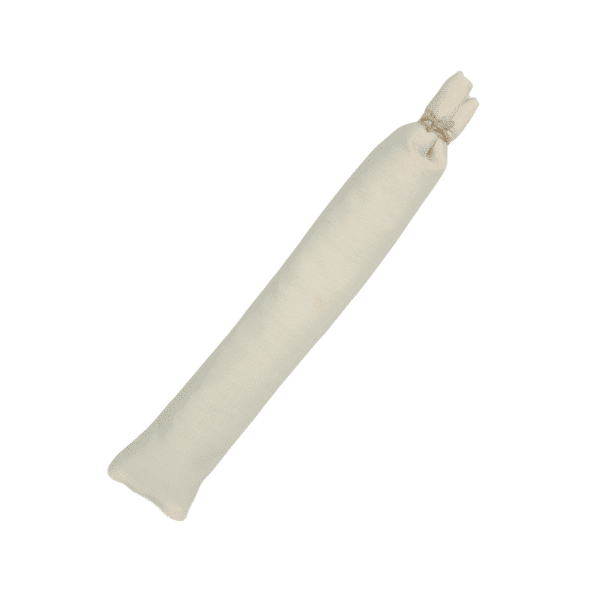
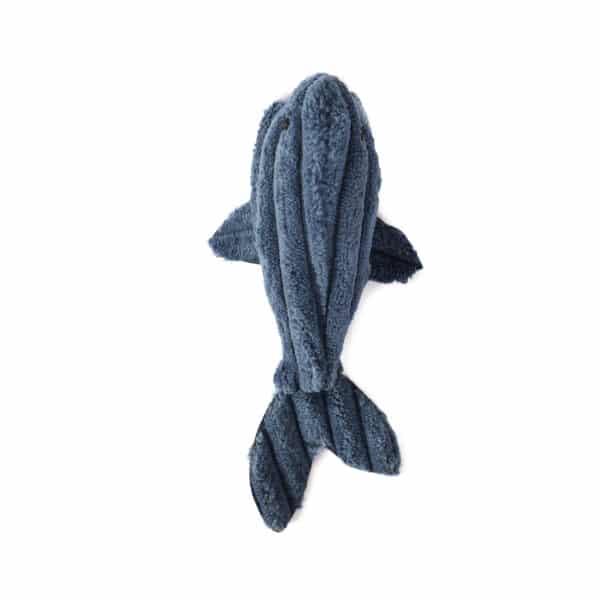
Hepper Catnip Stick
Hepper Whale Plush
Contains Catnip
Safe for KIttens
Self-play
All-Natural
Washable
Total Monthly Cost of Owning a Snowshoe Cat
- $50–$150 per month
You probably won’t have to purchase that much each month for your cat. The most expensive thing will be your cat’s food and cat litter, though the exact price will depend on the type you use. Some cat food is triple the cost of other cat food, so the price really does vary a lot.
Additional Costs to Factor In
On top of all the costs we listed above, you should also consider some of these additional costs, which likely won’t show up with much regularity.
When you go on vacation or have to travel for work, you may need to hire a pet sitter or board your cat at a kennel. These costs can vary widely based on location and the level of care provided but can range from $15 to $50 per day or more. Unexpected vet costs can be exceedingly expensive, and you should have an emergency fund set aside to pay for these, even if you have pet insurance.
Cats, including Snowshoe cats, may scratch furniture, knock over objects, or have accidents that could damage your home. Consider budgeting for potential repair or replacement costs. Depending on your furniture costs, this can be exceedingly expensive, as well.
Owning a Snowshoe Cat on a Budget
Plan your monthly budget for cat essentials like food, litter, and routine veterinary care. Look for sales and discounts on pet supplies, and consider buying in bulk to save money. Pet insurance can help you save money in the long run, though it will cost money in the short term. Keep this in mind when deciding whether it is worth it or not.
Saving Money on Snowshoe Cat Care
If you’re really looking to save money, you can DIY all sorts of cat toys. Even interactive toys can be effectively made yourself. Feeder toys are particularly easy to DIY, for instance. With just a bottle and some treats, you can make a slow feeder that will keep your cat busy.
Preventive care can help prevent problems from occurring later on, which tend to be even more expensive. Get your cat’s vaccinations—while they may be costly upfront, they prevent even more costly illnesses from occurring, saving you potentially thousands of dollars.
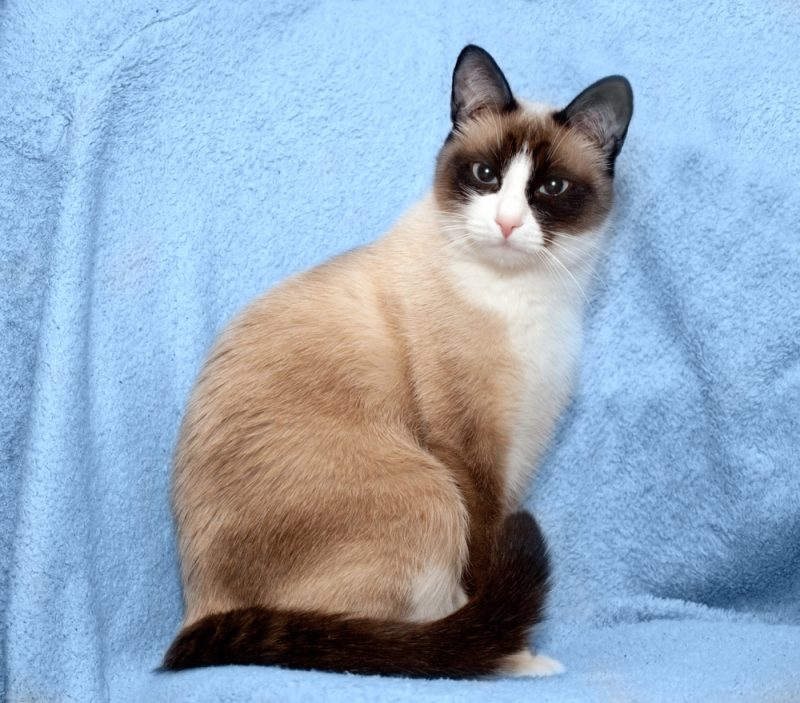
Conclusion
Owning a Snowshoe cat involves both one-time and ongoing monthly costs. The initial one-time expenses can range from $100 to $400 or more, covering supplies like a litter box, food bowls, toys, grooming tools, and initial vaccinations. That said, the cost of adopting one of these cats is often thousands of dollars. They are exceptionally rare, which is why they tend to be so expensive.
On a monthly basis, budget-conscious ownership typically amounts to $55 to $150 or more. This monthly expense covers essentials such as high-quality cat food, litter, routine vet care, and pet insurance.
You should also plan for miscellaneous costs, such as grooming supplies and toys. It’s also important to have an emergency fund for unexpected vet bills or other unforeseen expenses. It’s easy to overlook these and hard to plan for them.
Featured Image Credit: Yuliya Alekseeva, Shutterstock

